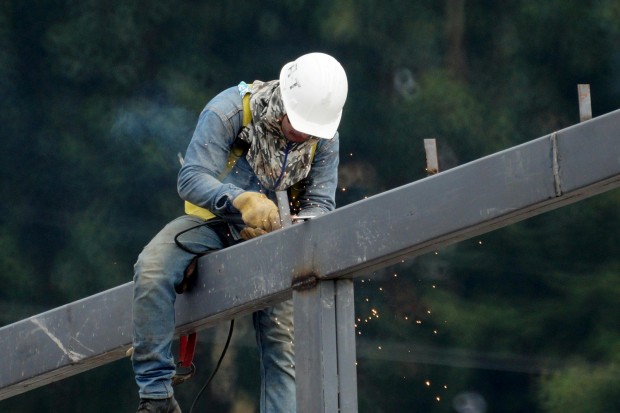Steel beams can be utilized in various applications in the construction industry, including scaffolding, roofs, and other components of the construction process. Therefore, steel beams come in many varieties, each designed to fulfil a particular function.

(Photo : Pexels/CESAR A RAMIREZ VALLEJO TRAPHITHO )
1. H-Beams
The material known as hot-rolled structural steel, which is used to make H-beams, is widely used because of its extraordinary strength and endurance. A web is also used to carry the strain on these beams, and the legs, which are referred to as flanges, contribute to the beam's strength. These structures are capable of supporting elevated structures and can be connected through welding or riveting, providing exceptional support for horizontal structures such as floors and roofs.
2. T-Section Beam
While the T-section beam is most frequently utilized as a load-bearing section, it also serves as a connecting point and a support foundation between beams made of wood or steel. The installation of many sections of I or W beams in a substantial area without negatively impacting the structural integrity of the building is made possible by these beams, which are a typical sight in any residential construction project and make it possible to construct multi-level constructions. A solid base that is able to support the base buildings that are located around it is created by using rivets and bolts to bind beams together. In order to create a balanced steel internal structure, the majority of T-section beams are positioned on top of steel pillars and beams.
3. W-Beam
Within the realm of residential construction projects, the W-beam, also known as the Wide Flange Beam, is among the most often utilized forms of steel beams. Due to its lesser weight, this particular steel beam is frequently employed in smaller residential projects. This is because heavier steel may affect the integrity of the structure when used in conjunction with lightweight materials.
Also Read: 7 Ways to Keep Your Construction Tools in Good Condition
4. I-Beam
The I-beam, which is one of the most frequent forms of steel beams, has established itself as an essential component of the support structure of a building through its widespread application in a wide range of construction projects. In the Philippines, where there is a significant demand for steel products, beams are also a common product. On the other hand, the I-beam has tapering flanges, in contrast to the H-beam and the W-beam.
There is a widespread misunderstanding between the I-beam and the H-beam because both beams have a comparable shape and function. A developing urban landscape necessitates the construction of larger and more robust structures that are able to endure a variety of situations. Although I-beams are most commonly used in industrial projects, they have also become abundant in residential construction projects.
5. Box Beams
The formation of a rectangle or square section is the result of welding or bending two or more plates together to create a box beam. Concrete is frequently used to fill them, much like it is with HSS beams, in order to increase their strength and durability. In terms of both strength and weight, box steel beams provide a satisfactory compromise. On the other hand, while the beam's structural integrity is preserved, the hollow section helps to lower the overall weight of the beam. Box beams are well-suited for industrial applications, high-rise structures, and bridges with a wide span.
Related Article: 6 Most Common Construction Beams Used in Engineering







